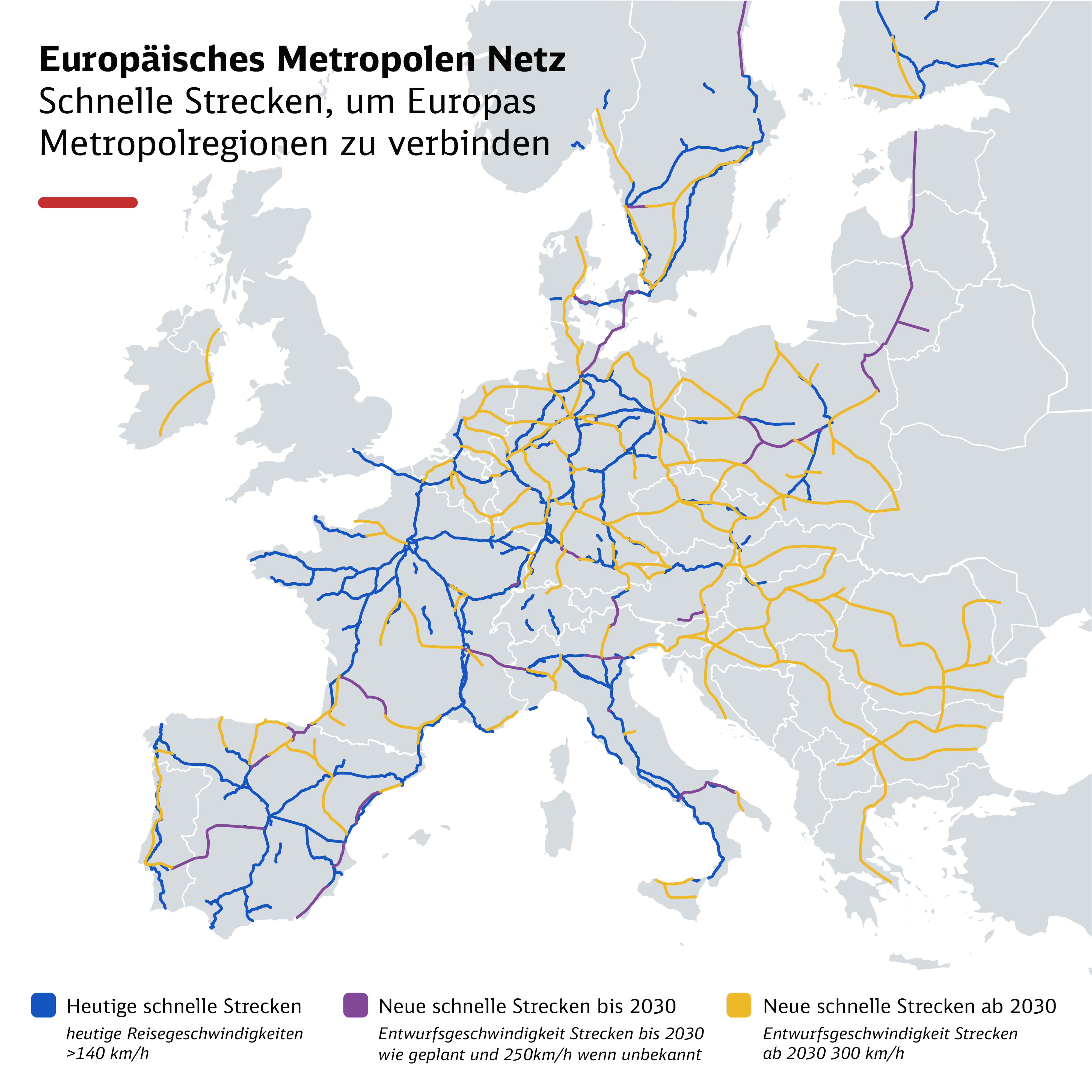Article: DB presents study on expansion of high-speed rail in Europe
Proposal for "Metropolitan Network" aims to connect two-thirds of Europeans by 2050 • High-speed rail network to be extended from today's 11,000 km to 32,000 km • Green Deal targets for transport sector to be addressed
Deutsche Bahn (DB), together with European rail companies, has carried out a study on the expansion of high-speed rail transport in Europe. The proposal for a "Metropolitan Network" focuses on the specific expansion of rail lines for fast passenger trains across the continent and on the simulation of the resulting possible growth in transport volume on environmentally friendly rail. The starting point of the study is the European Commission's Green Deal. This intends to bring about a doubling in volume for European high-speed rail (HSR) by 2030 and a tripling by 2050, allowing it to make an important contribution to reducing carbon emissions in the transport sector. In the study, specialists analyzed what a Green Deal rail network would have to look like in order to achieve the EU's targets.
Michael Peterson, Member of the Management Board for Long Distance Passenger Transport at DB: "A tripling of high-speed rail traffic in Europe is possible. Once the infrastructure is in place, millions of people on the continent will benefit from attractive connections and faster travel times. The rail countries in central and western Europe, and even more so in southern and eastern Europe, will enjoy the advantages. According to our calculations and simulations, this will result in faster travel times on entirely new corridors and via new traffic hubs on rail."
The main facts and figures of the Metropolitan Network project:
- It connects all 230 metropolitan regions (defined as urban agglomerations of more than 250,000 inhabitants) and large cities in Europe to the high-speed rail network with HSR service at least once an hour.
- Around 60% of Europeans live in the metropolitan regions and would thus have direct access to high-speed rail, even in regions where there are no fast rail links at all today.
- The key lies in the infrastructure: A total of 21,000 kilometers of track needs to be built and upgraded across Europe. Routes designed for high-speed rail service would be nearly tripled, from about 11,300 kilometers today (Eurostat 2019) to about 32,000 kilometers by 2050. It should be possible to reach speeds of 300 km/h on the new network.
- For Germany, this means that if the network upgrade were to include the lines already under construction and planned, the high-speed infrastructure in this country would grow to cover 6,000 kilometers. Poland would also be a winner, increasing its network more than tenfold, by 2,760 kilometers from today's 224 kilometers.
If the Green Deal is to succeed, the EU and its member states must provide substantial additional funds and invest in expanding the HSR network throughout Europe. The rail companies involved want to discuss this with politicians in the fall. The infrastructure measures currently being planned or built are not sufficient to achieve a doubling of high-speed rail traffic by 2030.
